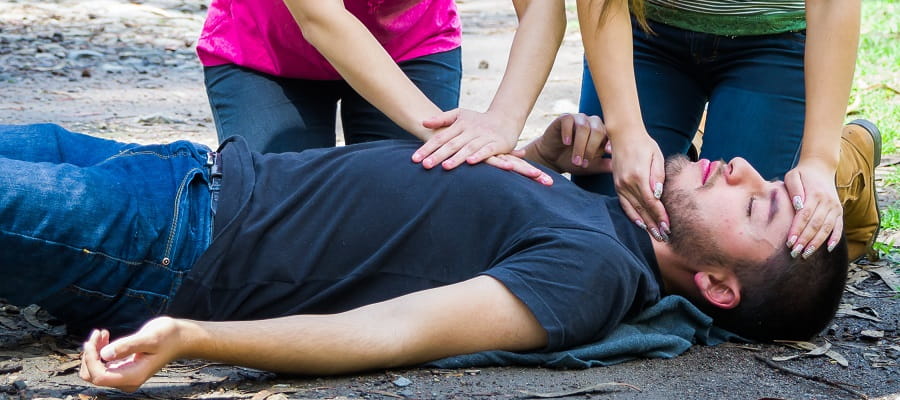
Most of us know the basic principles of cardiopulmonary resuscitation (CPR); that it combines chest compressions and breaths to deliver oxygen and pump oxygenated blood around an unconscious person’s body. However, there are also some common misconceptions around CPR and those requiring it.
How well do you know your fact from fiction?
We look at some of the common myths below, and why they can sometimes be dangerously wrong.
Myth: Cardiac arrest is the same as a heart attack
Truth: The two conditions are not the same.
Cardiac arrest is a sudden, unexpected cessation of heart function that occurs when there is an electrical disturbance in the heart. The disturbance either causes the heart to stop beating altogether or makes it quiver weakly and inefficiently, interrupting life-sustaining blood flow to the brain.
A heart attack is caused by a blockage in blood flow to the heart muscle. While a heart attack could, in some cases, lead to cardiac arrest, they are decidedly not the same.
Myth: People who need CPR are usually older and sicker
Truth: This is definitely a myth, and a dangerous one.
Cardiac arrest can strike anyone and everyone, regardless of age, gender or race. In fact, many victims of cardiac arrest have no history of medical problems. Incorrectly assuming someone who appears fit and healthy could not be suffering cardiac arrest may lead to delays in providing CPR, which could affect their chance of survival.
Myth: CPR for infants, children and adults is exactly the same
Truth: There are slight differences in CPR for adults, children and infants.
Although the basic steps in adult and paediatric CPR are similar, there are nuances that are important to learn. For example, children require less forceful chest compressions and rescue breaths.
Read more about child and infant CPR at the link below.

Myth: Bystanders can be sued if they hurt the victim while performing CPR
Truth: A common misconception, but this is not the case.
While unintentional injuries – such as breaking of the ribs – can occur during the process of administering CPR, Good Samaritan laws protect those who provide emergency medical assistance to someone.